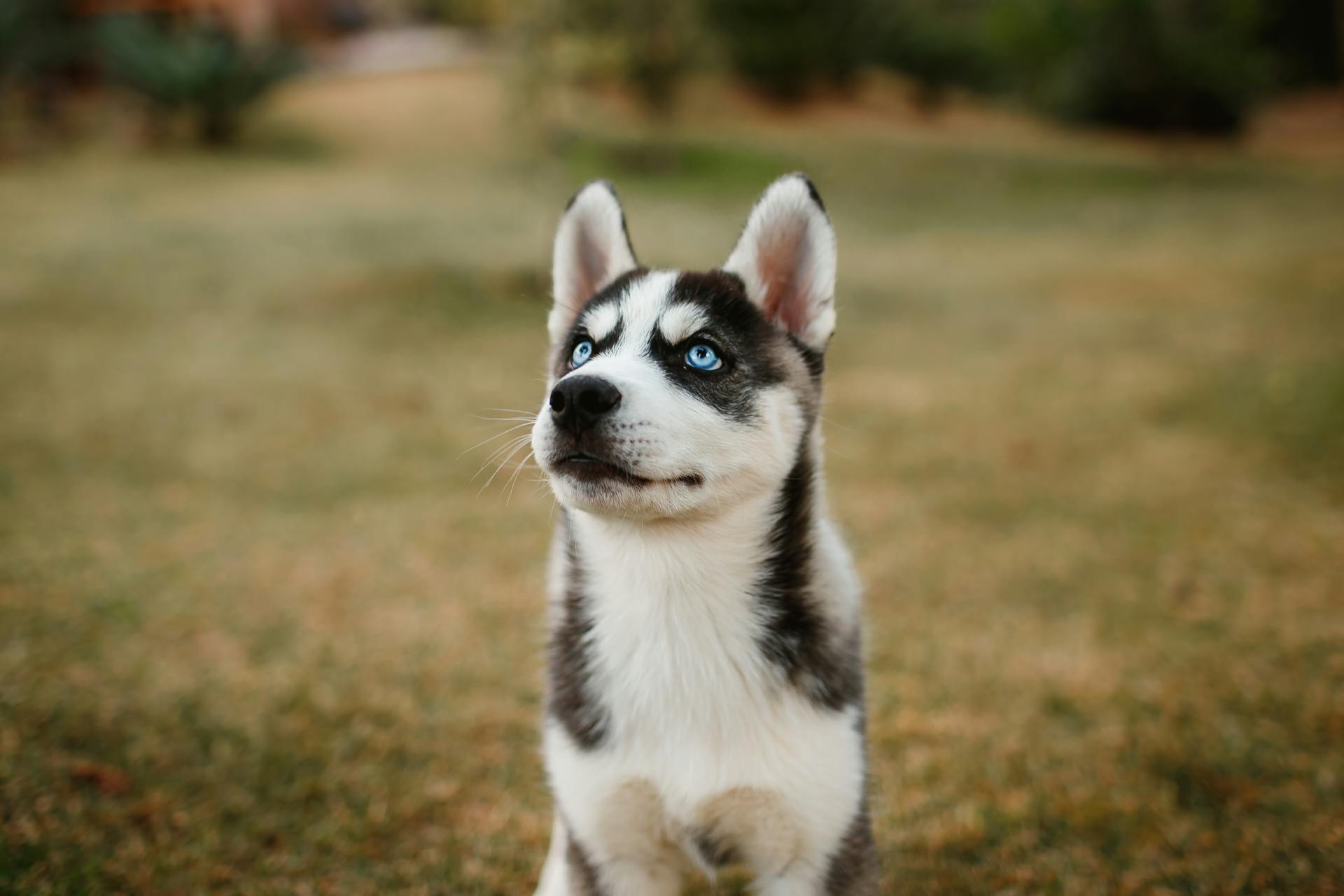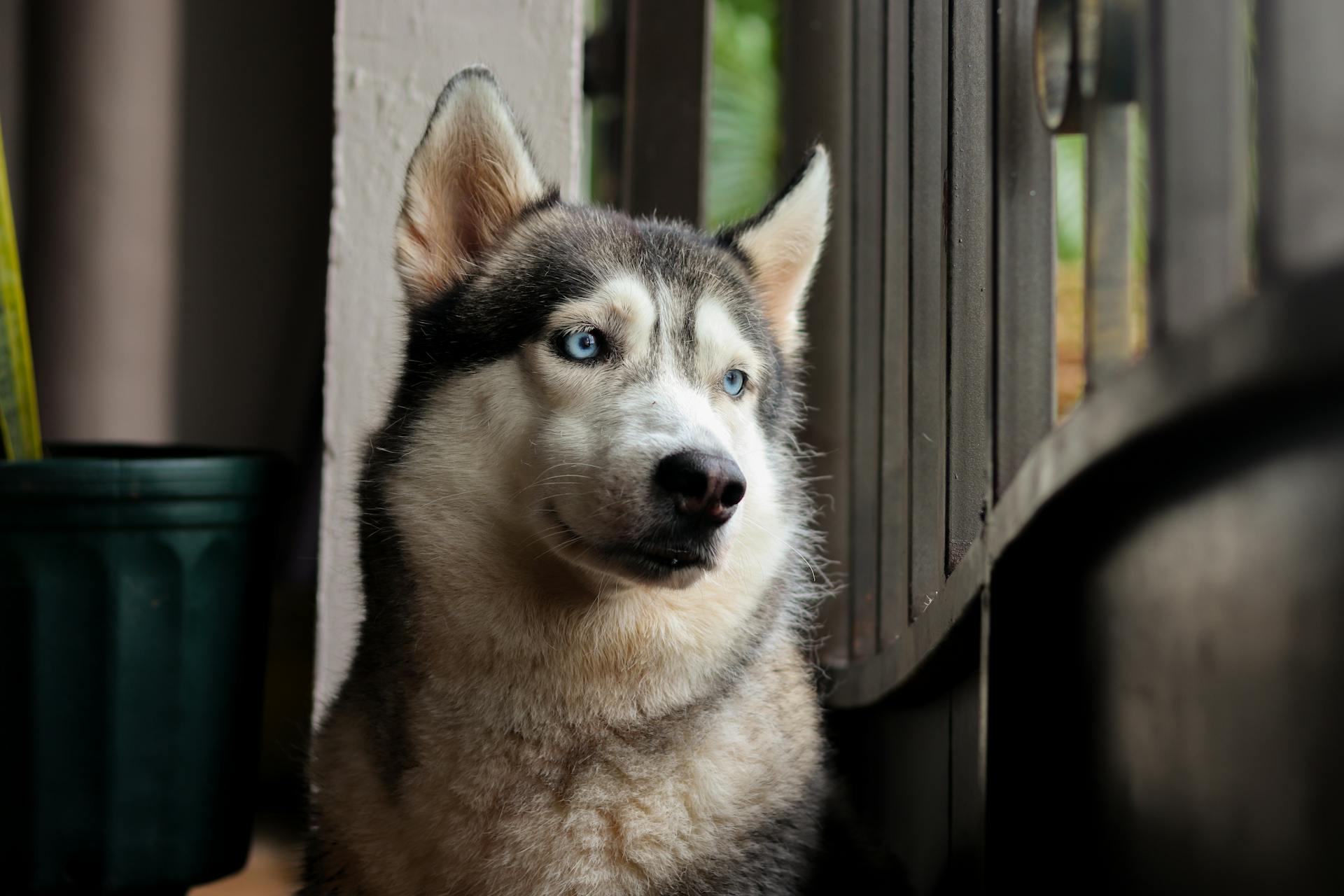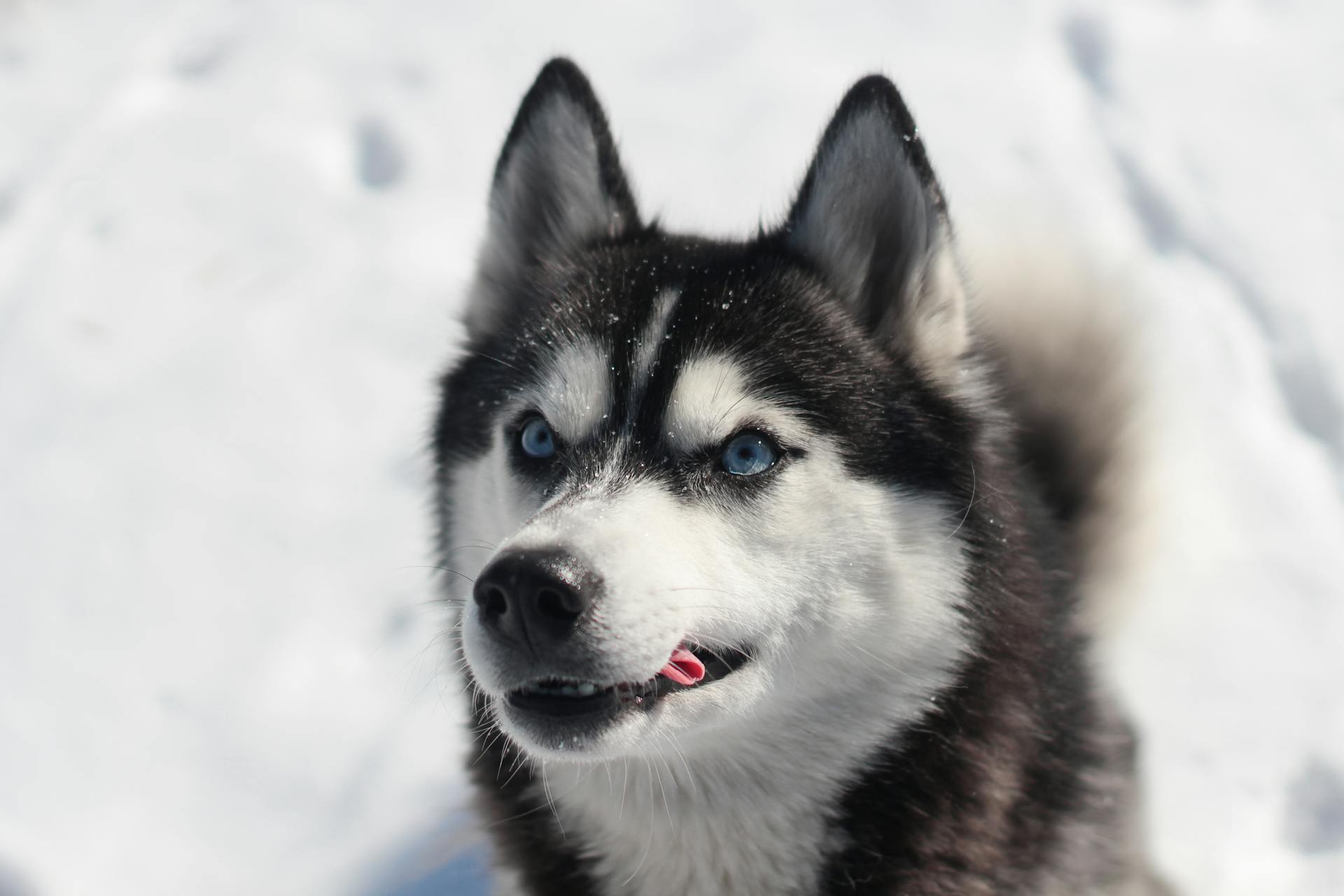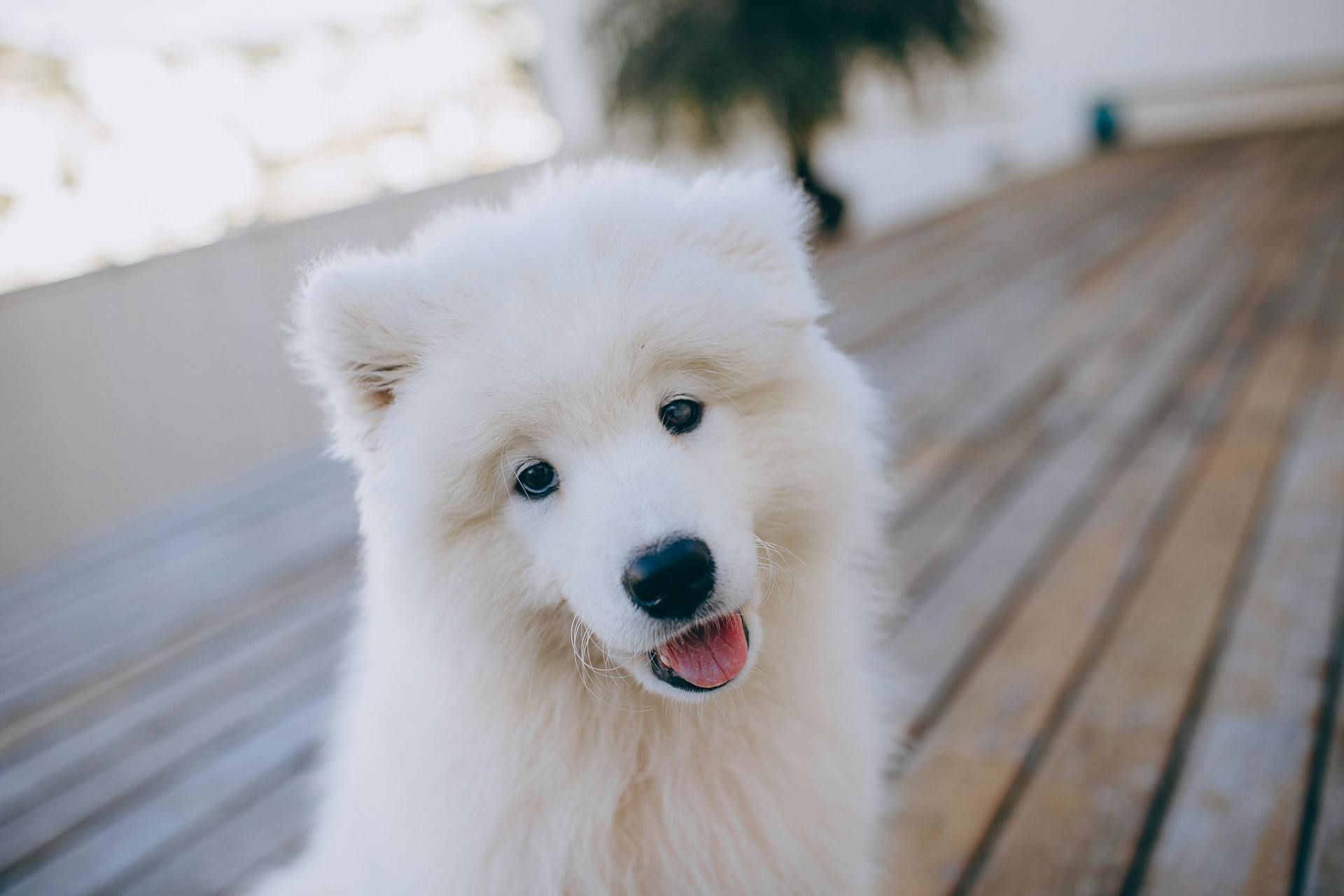
The Samoyed, Siberian Husky, and Alaskan Malamute are three popular breeds that often get confused with one another. They all originated from the Arctic region and were bred for similar purposes.
One of the most notable differences between these breeds is their size. The Samoyed typically weighs between 40-65 pounds, while the Siberian Husky weighs between 35-60 pounds, and the Alaskan Malamute weighs between 70-95 pounds.
Their coats also vary significantly. The Samoyed has a thick, fluffy coat that sheds heavily, while the Siberian Husky has a double coat that sheds moderately, and the Alaskan Malamute has a thick, coarse coat that sheds heavily.
In terms of energy levels, these breeds are all high-energy dogs that require regular exercise to stay happy and healthy. However, the Alaskan Malamute is generally more energetic than the other two breeds.
Curious to learn more? Check out: Blowing Husky Coat
Appearance
The Alaskan Malamute, Siberian Husky, and Samoyed are all stunning dog breeds with thick double coats, but there are some key differences in their appearances.
The Malamute has a longer coat than the Husky, and both breeds shed heavily twice a year, so be prepared for the dreaded 'coat blow'.
Their eye colors are also distinct: the Husky is famous for its piercing blue eyes, but the Malamute always has brown eyes.
The Samoyed, on the other hand, has a trademark white coat with almond-shaped brown or black eyes.
One of the most noticeable differences between these breeds is their size: the Malamute is noticeably bigger than the Husky, even with its longer coat.
The Husky's head is smaller and their ears are closer together than those of a Malamute.
The Malamute's head is broad, with a bulky muzzle and triangular, erect ears.
Samoyeds also have triangular-shaped ears that are erect, giving them an alert appearance.
In terms of colors, the Malamute only comes in black, light gray, and shades of red, while the Husky has a wider range of colors, including black, red, gray, sable, white, and agouti.
The Samoyed's coat is also white, with or without black or brown markings.
Explore further: Gray Alaskan Malamute
Personality and Temperament
The three breeds we're comparing - Samoyed, Siberian Husky, and Alaskan Malamute - all share some similarities, but they also have some key differences when it comes to their personality and temperament.
Samoyed dogs are known for being friendly, easy-going, and sociable, and they love being around their owners. They're often referred to as the "smiling Sammy" due to their affectionate nature.
Siberian Huskies, on the other hand, are highly intelligent and independent, which can make them challenging to train. However, they respond well to positive reinforcement and are highly trainable with the right approach.
Alaskan Malamutes are also intelligent and independent, but they're known for being more receptive to instruction and eager to please. They're friendly, playful, and affectionate, but they can be stubborn at times.
One key difference between the breeds is their sensitivity level. Samoyed dogs are generally less sensitive than the other two breeds, while Siberian Huskies and Alaskan Malamutes are a little more sensitive.
Additional reading: Are Siberian Huskies Aggressive
In terms of affection level, Samoyed dogs are genuinely loyal and loving, while Siberian Huskies are also very affectionate. Alaskan Malamutes are average when it comes to affection level.
Here's a comparison of the breeds' social needs:
As you can see, all three breeds are social and need interaction with their owners. However, Samoyed dogs are particularly prone to wanderlust and may escape from home if they don't get enough attention and exercise.
In terms of prey drive, Samoyed dogs have a high impulse to chase and catch something, while Siberian Huskies have an average prey drive. Alaskan Malamutes have a higher impulse to chase and catch something than the other two breeds.
Overall, each breed has its own unique personality and temperament, and it's essential to research each breed thoroughly before deciding which one is right for you and your family.
Expand your knowledge: Cute Husky Mix Breeds
Origin
The Alaskan Malamute, Siberian Husky, and Samoyed all have fascinating origins that set them apart from one another.
The Alaskan Malamute is one of the oldest Arctic breeds and originated from Alaska, bred by the Malimiut Inupiaq people for hauling heavy loads over long distances in harsh winter conditions.
The Siberian Husky, on the other hand, came from Siberia, bred by the Chukchi people for sled pulling and transportation, with a focus on speed and endurance.
The Samoyed's ancestors were developed by the semi-nomadic Samoyedic people in Siberia over a thousand years ago, bred to work in the coldest habitable places on earth.
The Alaskan Malamute's ancestors arrived in the Americas 12,000 years ago, while the Siberian Husky's ancestors were developed for sled pulling and transportation in Siberia.
The Samoyed was bred to be a companion animal, watchdog, and hunter, with a particular focus on hunting reindeer to satisfy their appetite and promote good health.
The Malamute people and the Chukchi people, who bred the Siberian Husky, have distinct differences in their origins and breeding, despite both breeds being developed for work in cold climates.
The Alaskan Malamute was bred for heavy hauling, while the Siberian Husky was bred for speed and endurance.
You might enjoy: Alaskan Husky Sled
Exercise and Health
These breeds need a lot of exercise to stay happy and healthy, with daily routines ranging from 60 to 90 minutes of vigorous activity.
Alaskan Malamutes, in particular, require at least 60 minutes of exercise per day, which can include running, hiking, or playing fetch. They also enjoy pulling sleds or carts, which can be a fun activity for them to engage in.
Malamutes were originally bred as working dogs, so they have a lot of stamina and endurance. If you don't provide them with enough exercise, they can become bored and destructive.
Here's a comparison of the exercise needs of these breeds:
Samoyeds and Huskies are also prone to certain health issues, such as hip dysplasia and eye problems. Regular exercise, a healthy diet, and routine veterinary check-ups can help prevent or manage these issues.
A healthy lifestyle, including regular exercise and veterinary care, is essential for these breeds to live long and happy lives.
For more insights, see: Alaskan Malamute Health Problems
Size
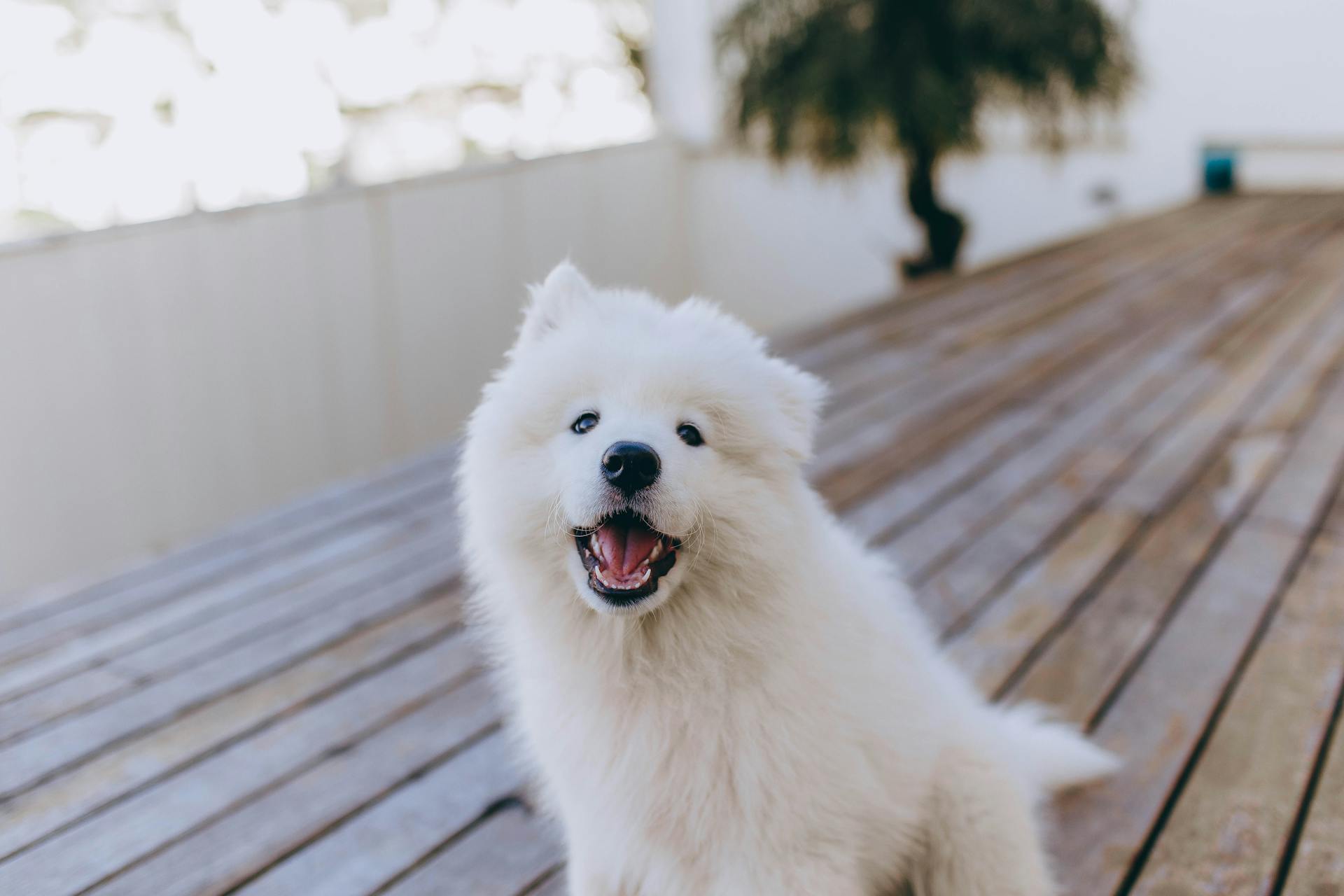
When considering exercise for your dog, size matters. Alaskan Malamutes will usually be between 23 and 25 inches tall and 75 to 85 pounds in weight.
Their larger size means they require regular exercise to stay healthy. Samoyeds, on the other hand, have an average size of 19 and 23.5 inches and 35 to 65 pounds depending on the sex of the dog.
A larger dog like an Alaskan Malamute needs more space to run around and play. This means they are best suited for homes with large yards or regular access to open spaces.
Worth a look: Giant Alaskan Malamute Size
Exercise Requirements
If you're considering bringing a high-energy dog into your family, it's essential to understand their exercise requirements. Both Alaskan Malamutes and Huskies need at least 60 minutes of vigorous exercise per day, which can include running, hiking, or playing fetch.
A daily exercise routine is necessary to keep them happy and healthy. They were originally bred as working dogs, so they have a lot of stamina and endurance. They also enjoy pulling sleds or carts, which can be a fun activity for them to engage in.
If you're planning to bring a Samoyed into your family, you'll need to provide around 60 minutes of exercise per day as well. They'll enjoy exercising with their family members, whether it's going for a walk, a trip to the dog park, or playing in the garden.
Here's a comparison of the exercise needs of Alaskan Malamutes, Samoyeds, and Siberian Huskies:
It's essential to note that these breeds shouldn't be left alone in a yard for extended periods of time, as they can become bored and destructive. Providing regular exercise and mental stimulation can help prevent this behavior.
Common Health Issues
As you exercise your Alaskan Malamute or Husky, it's essential to be aware of the common health issues that can affect these breeds. Regular exercise can help prevent or manage these issues, but it's also crucial to know what to look out for.
Alaskan Malamutes are particularly susceptible to hip dysplasia, a condition where the hip joint doesn't develop properly, which can lead to arthritis and lameness.
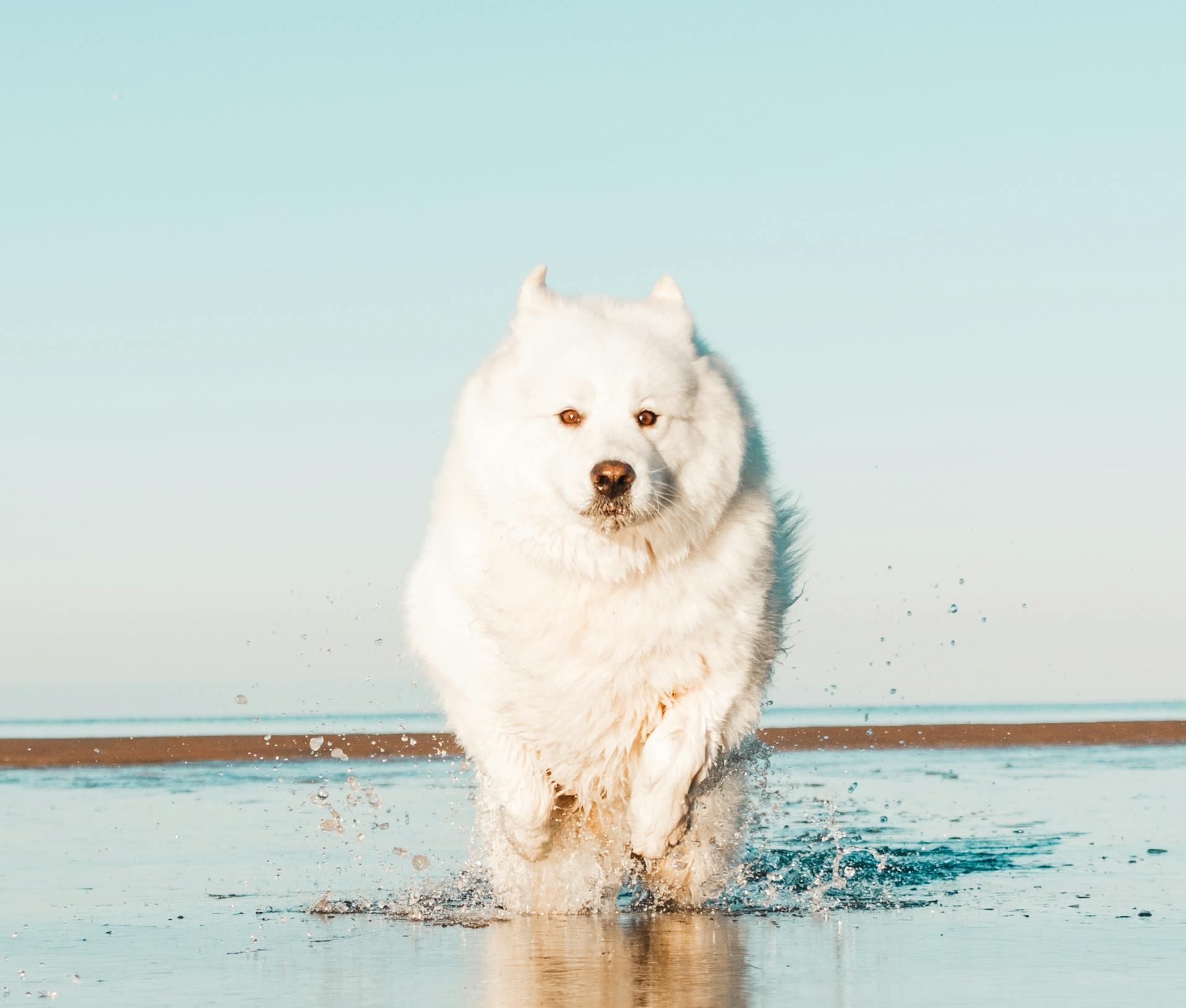
Hip dysplasia is a common issue in many breeds, but Alaskan Malamutes are especially prone to it. Exercise can help maintain joint health, but regular veterinary check-ups are also vital.
Huskies, on the other hand, are prone to zinc-responsive dermatosis, which causes skin problems. This condition can be managed with a balanced diet and regular grooming.
Both breeds may also suffer from eye problems such as cataracts and progressive retinal atrophy. Regular veterinary check-ups can help detect these issues early on.
Here's a summary of common health issues in Alaskan Malamutes and Huskies:
By being aware of these common health issues, you can take proactive steps to keep your Alaskan Malamute or Husky healthy and happy. Regular exercise, a balanced diet, and regular veterinary check-ups are essential for maintaining their overall health.
Care and Grooming
These three breeds are known for their thick coats, but they require regular grooming to prevent matting and tangling. They need to be brushed daily, especially during peak shedding seasons.
Samoyeds are heavy shedders, while Alaskan Malamutes and Siberian Huskies are also heavy shedders, but their shedding is more intense during the changing of the seasons. Regular brushing is a must to remove dead or loose hair.
Alaskan Malamutes and Siberian Huskies require regular bathing to keep their coats clean and healthy, while Samoyeds need a bath every eight weeks. However, if your Samoyed loves to roll in dirt or other smelly substances, they may need more frequent baths.
To keep your Samoyed, Siberian Husky, or Alaskan Malamute healthy and happy, regular exercise is a must. A daily walk or run is recommended, and they also enjoy activities like hiking, swimming, and playing fetch.
Here's a brief comparison of the grooming needs of these breeds:
As you can see, Samoyeds require the most grooming effort, while Siberian Huskies and Alaskan Malamutes require average grooming effort.
Take a look at this: Malamute Grooming
Trainability and Intelligence
When training a Samoyed, you'll find that they are eager to please and form a strong bond with you.
The Samoyed's working history means they love to learn and pick up new skills with ease, making them a joy to train. They thrive on mental and physical stimulation, so incorporating activities like agility, nose work, or herding into your training routine can be incredibly rewarding.
The Samoyed is considered a smart breed, ranking high in intelligence. They are also easy to train, according to expert opinions.
Here's a brief comparison of the trainability and intelligence of Samoyed, Siberian Husky, and Alaskan Malamute breeds:
Overall, the Samoyed's intelligence and trainability make them a great breed for first-time dog owners or those looking for a loyal companion.
Suitability and Lifestyle
Samoyeds are best suited for owners who have plenty of time to play and train with them, as they need a lot of exercise and mental stimulation. They love spending time with their human friends and are always eager for a new adventure.
Samoyeds adapt well to lifestyle changes and different living environments, making them a great choice for families who like to travel or have changing schedules. However, they do best when a family member is at home during the day or if their workplace is dog-friendly so they can take the dog at work.
Here's a comparison of the three breeds in terms of adaptability and tolerating being left alone:
Suitability as Pets
If you're considering bringing a Samoyed into your life, you'll want to think carefully about your lifestyle and whether it's a good fit for this high-energy breed. They need a lot of exercise and mental stimulation, which means owners need to have plenty of time to play and train with them.
Samoyeds are adaptable to lifestyle changes and different living environments, making them a great choice for people who like to travel or have varying work schedules. However, they do best when a family member is at home during the day or if their workplace is dog-friendly.
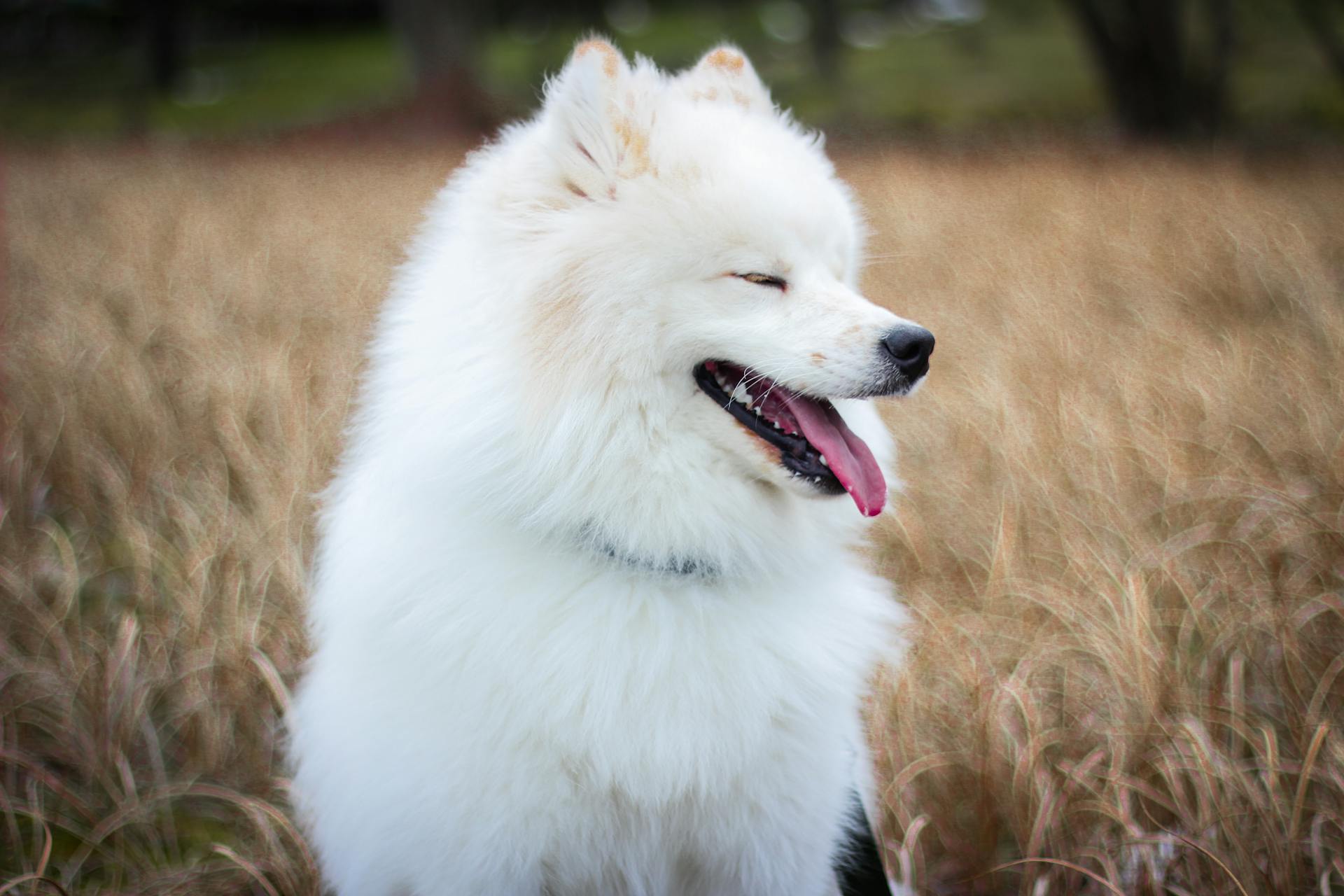
If you're away from home for long periods, a Samoyed may not be the best choice. They can get anxious and destructive if left alone for too long, so it's essential to have a plan in place for their care when you're not there.
Here's a quick comparison of Samoyeds and other breeds in terms of adaptability and independence:
Ultimately, whether a Samoyed is suitable as a pet depends on your lifestyle and ability to provide the care and attention they need. With the right owner, they can be loyal and loving companions, but with the wrong owner, they can become anxious and destructive.
Price and Availability
When considering the cost of these breeds, it's essential to think about your budget and lifestyle. The price of an Alaskan Malamute typically ranges from $1000 to $2000, while a Samoyed can cost anywhere from $600 to $1500, depending on the breeder and lineage.
Check this out: How Much Does Alaskan Malamute Cost
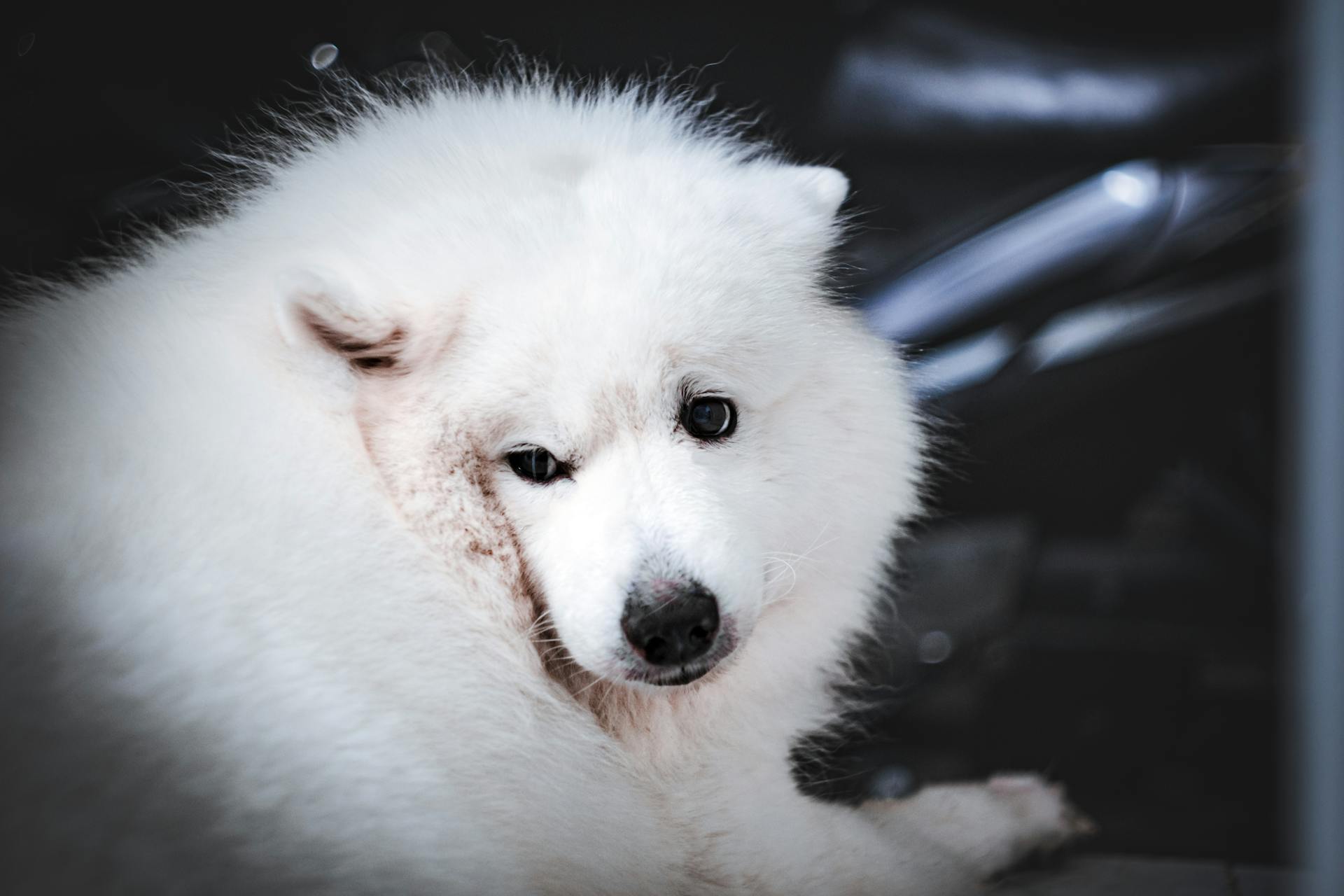
If you're looking for a breed that's a bit more affordable, the Samoyed might be a good choice, but be aware that some can cost as much as $3000. On the other hand, the Alaskan Malamute and Samoyed both tend to have similar price ranges, with the Alaskan Malamute being slightly more expensive.
In terms of availability, all three breeds are relatively easy to get, with the Samoyed being the most frequent to find. However, if you're looking for a breed that's widely available, the Alaskan Malamute and Siberian Husky are also quite easy to get, with price ranges of $1200-$1500 and $700-$1200, respectively.
Here's a quick comparison of the price and availability of these breeds:
Remember to research reputable breeders and ask to see your pup's parent, request proof of health checks and vet examinations as well as vaccinations before making a purchase.
Breed Characteristics
Samoyeds are known for their fluffy white coats that require regular grooming to prevent matting.
They are highly social dogs that thrive on attention and interaction with their family.
Samoyeds are generally quiet, but they do have a high-pitched howl that can be a challenge for some owners.
Their thick coats also make them well-suited for cold climates.
Huskies, on the other hand, are bred for their endurance and agility.
They have a thick double coat that sheds heavily, requiring regular brushing to prevent matting.
Huskies are highly energetic and require plenty of exercise to keep them happy and healthy.
Their independent nature can make them challenging to train.
Malamutes are known for their strength and endurance.
They have a thick coat that sheds heavily, but they are generally easy to groom.
Malamutes are highly intelligent and can be stubborn at times, requiring patient training.
Their thick coats also make them well-suited for cold climates.
Expand your knowledge: Are Huskies Wolf Hybrids
General Information
Samoyeds, Huskies, and Malamutes are all high-energy breeds that require regular exercise to stay happy and healthy. They love to run and play, so if you're an active person who enjoys outdoor activities, you'll be a great match for one of these breeds.
Samoyeds are generally smaller than Huskies and Malamutes, weighing between 35-65 pounds and standing between 19-23 inches tall. They have a thick, fluffy coat that sheds heavily, so be prepared for regular grooming.
Huskies are known for their striking blue or brown eyes and their athletic build, which makes them well-suited for dog sports like agility and sled pulling. They're also highly intelligent and trainable, but can be independent and stubborn at times.
Malamutes are one of the oldest dog breeds, with a history dating back over 4,000 years. They're built for endurance and can travel long distances with ease, but they can also be strong-willed and require consistent training.
All three breeds are pack animals and thrive on interaction with their human family. They love to be around people and will often follow you from room to room, looking for attention and affection.
Consider reading: Nombres Para Huskys
Diet and Nutrition
If you're considering bringing home a Samoyed, Siberian Husky, or Alaskan Malamute, you'll want to think about their diet and nutrition needs.
A Samoyed, Siberian Husky, and Alaskan Malamute all require high-quality dry food, and their daily food consumption varies. On average, a Samoyed needs 2 to 3 cups of dry food per day, divided into two meals.
A Siberian Husky requires a similar amount, with 2.5 to 3 cups of dry food needed daily, divided into two meals.
An Alaskan Malamute, however, needs more food, with 4 to 5 cups of dry food required daily, divided into two meals.
If you're prone to overfeeding, be aware that a Samoyed has a higher risk of weight gain, while a Siberian Husky has a lower risk of obesity.
Here's a quick comparison of their weight gain potential:
Remember, all three breeds require regular exercise and a balanced diet to stay healthy and happy.
Recognition and Reproduction
These three breeds are recognized by several kennel clubs and organizations, including the American Kennel Club, Federation Cynologique Internationale, and Kennel Club of Great Britain.

The American Kennel Club recognized the Samoyed in 1906, the Siberian Husky in 1930, and the Alaskan Malamute in 1935 as Working breeds.
The gestation length for all three breeds is the same, 60-64 days, and they typically have litters only once a year, as more frequent breeding can be unhealthy.
Here's a comparison of their litter sizes:
Recognition
The American Kennel Club (AKC) recognizes three breeds: the Samoyed, the Siberian Husky, and the Alaskan Malamute. The Samoyed was recognized by the AKC in 1906 as a Working breed.
The AKC recognizes these breeds in the Working group. The Siberian Husky was recognized by the AKC in 1930 as a Working breed, while the Alaskan Malamute was recognized in 1935.
The Federation Cynologique Internationale (FCI) also recognizes these breeds. The FCI recognizes all three breeds in the Spitz and primitive types group, in the Nordic Sledge Dogs section.
Here's a list of organizations that recognize the breeds:
These organizations ensure that these breeds meet specific standards and are bred responsibly.
Reproducibility
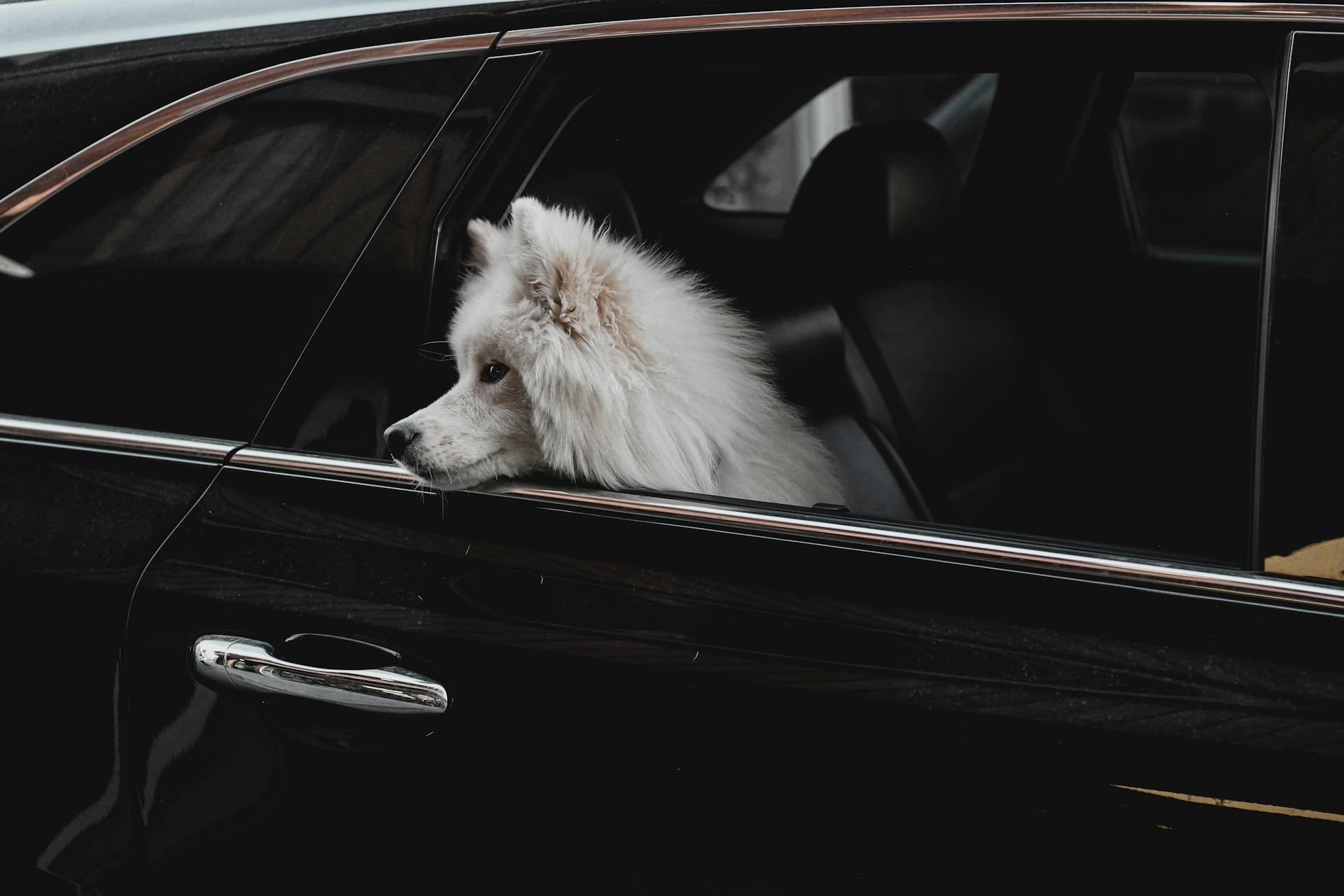
Reproducibility is a crucial aspect to consider when thinking about breeding dogs. Female Samoyeds, Siberian Huskies, and Alaskan Malamutes can have puppies once a year.
More frequent breeding is not healthy for these breeds, so it's essential to plan ahead and ensure the mother is given sufficient time to recover between litters. This approach will help prevent any potential health issues.
The gestation period for all three breeds is remarkably consistent, lasting between 60-64 days. This means that owners can expect to welcome new puppies after about two months of pregnancy.
Here's a comparison of the average litter size for each breed:
It's worth noting that these litter sizes are averages, and actual numbers can vary depending on various factors, including the individual dog's health and genetics.
Frequently Asked Questions
Are Samoyeds vocal like huskies?
Samoyeds are known for barking, unlike their howling Siberian Husky relatives. If you're considering a Samoyed as a pet, be prepared for regular vocalizations.
Sources
- https://www.wideopenspaces.com/malamute-vs-husky/
- https://blog.tryfi.com/are-alaskan-malamute-and-husky-the-same/
- https://www.dogster.com/dog-breeds/samoyed-vs-husky
- https://hellobark.com/dogs/alaskan-malamute-vs-samoyed-whats-the-difference/
- https://dogell.com/compare-dog-breeds/samoyed-vs-siberian-husky-vs-alaskan-malamute
Featured Images: pexels.com
